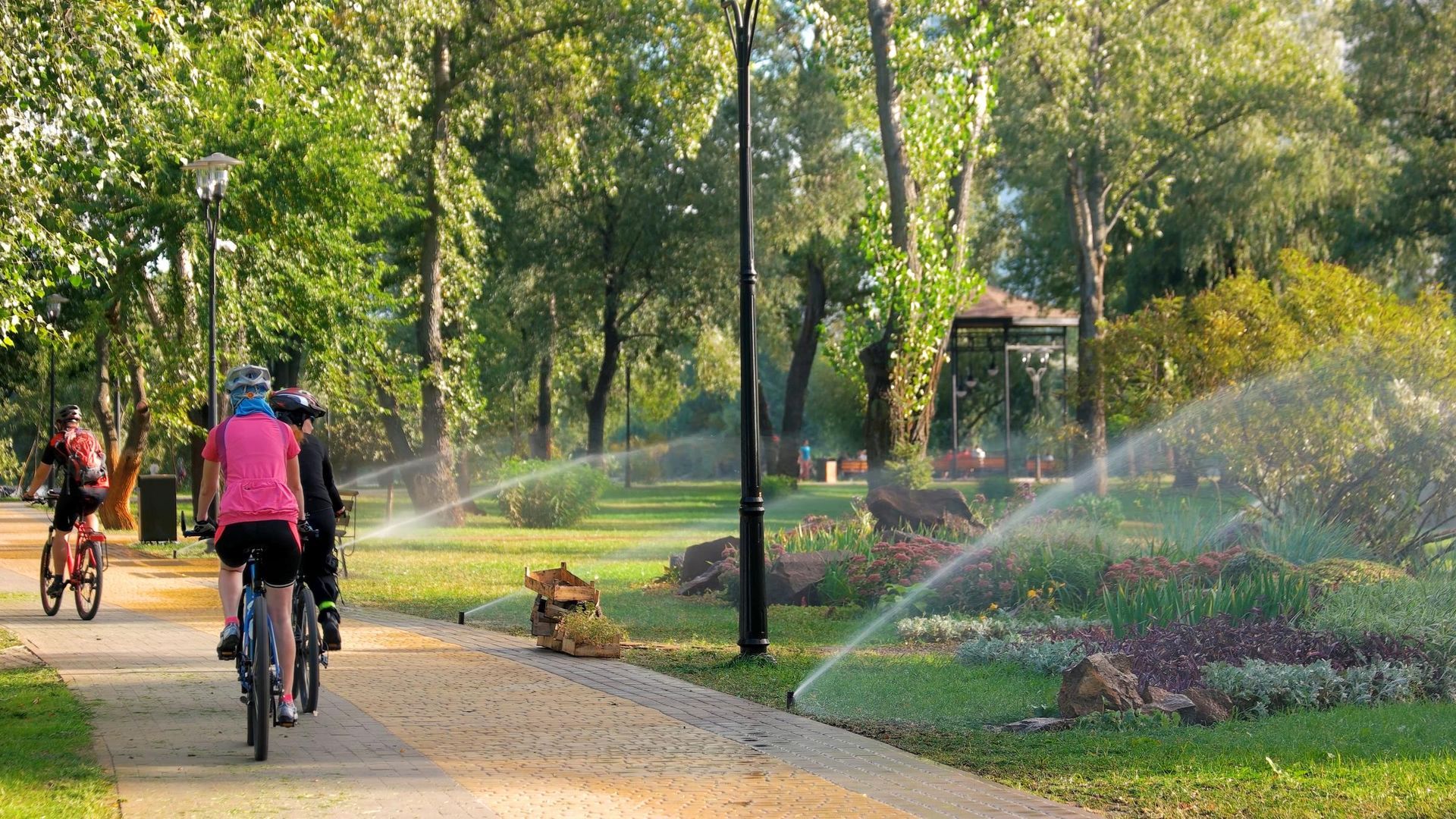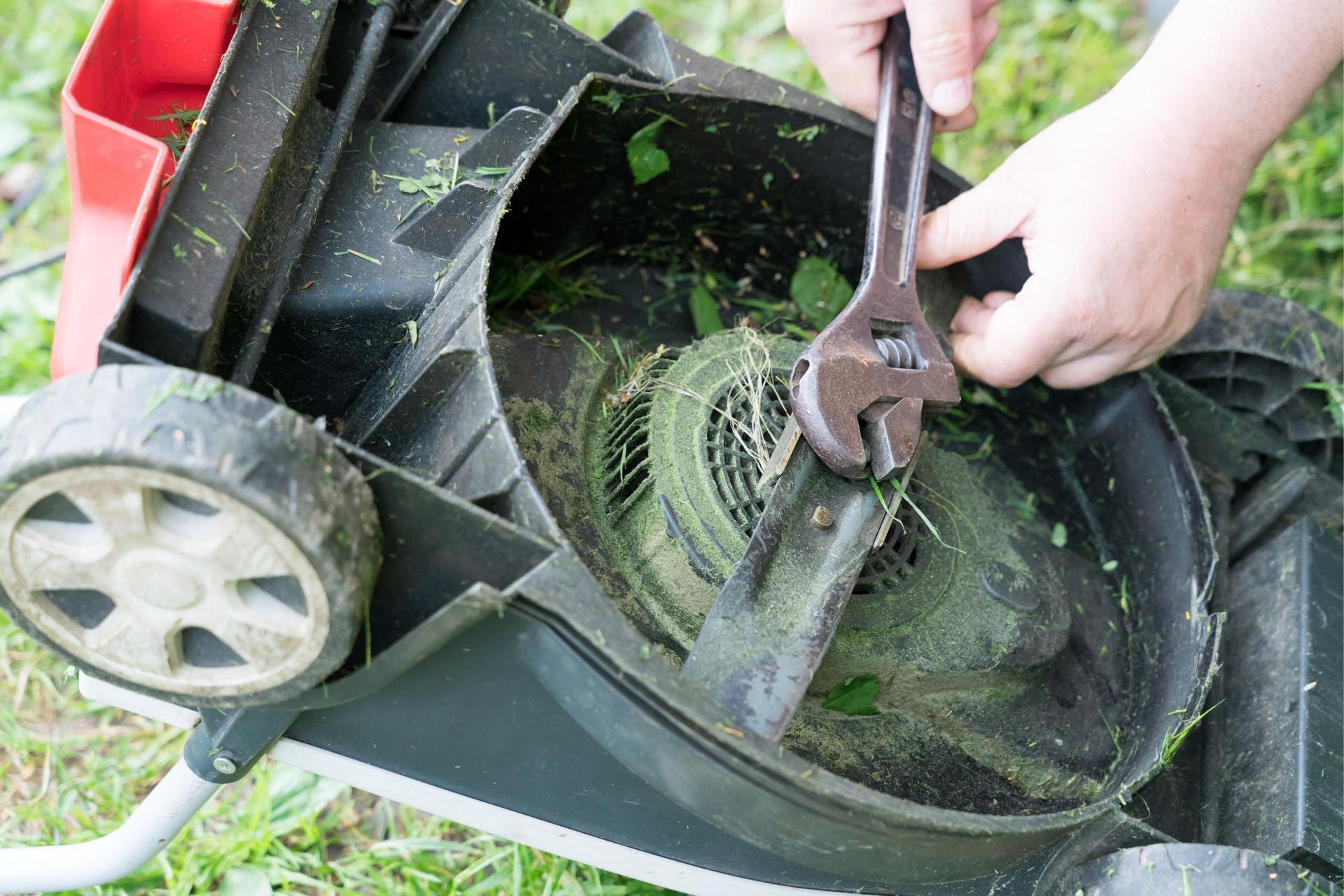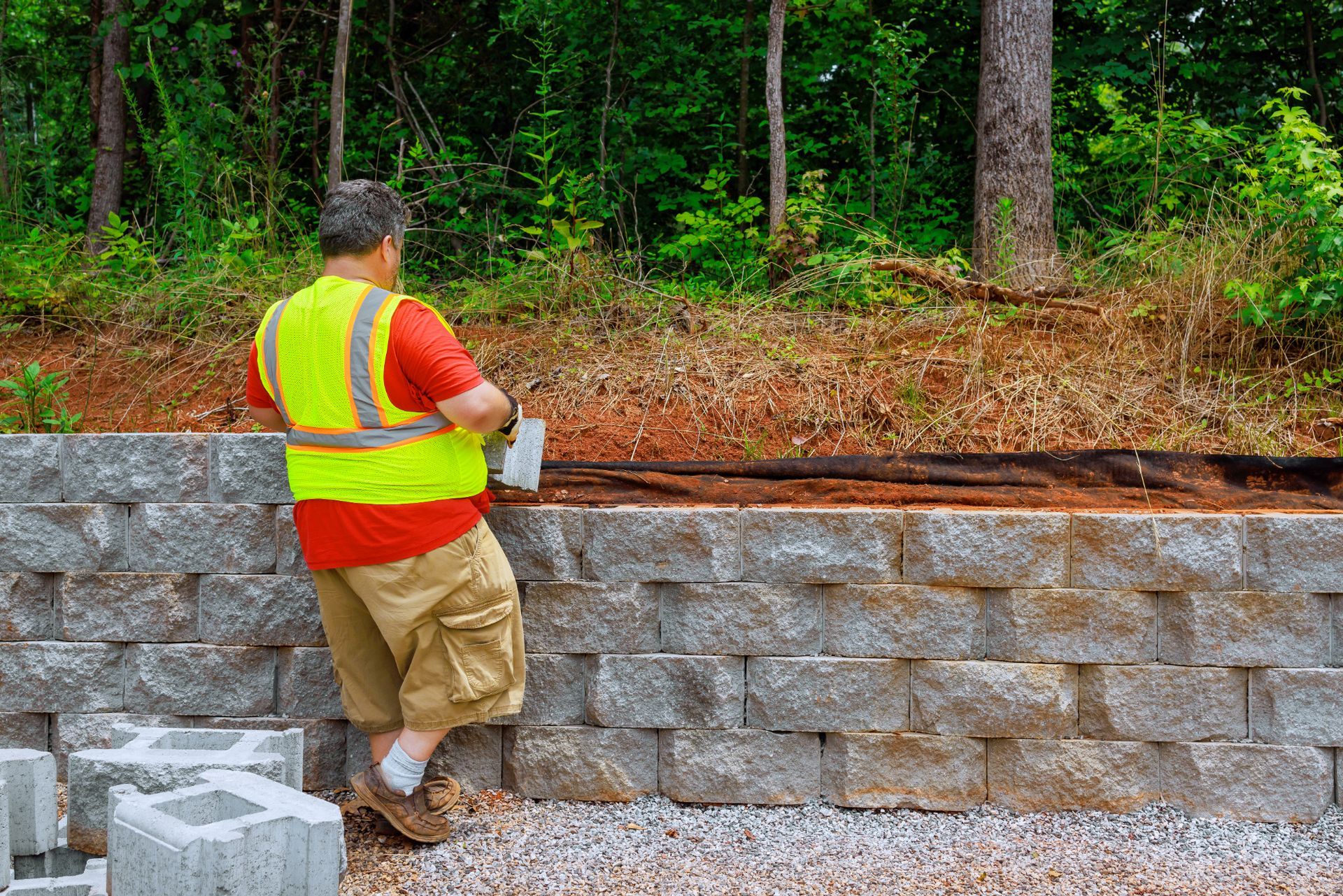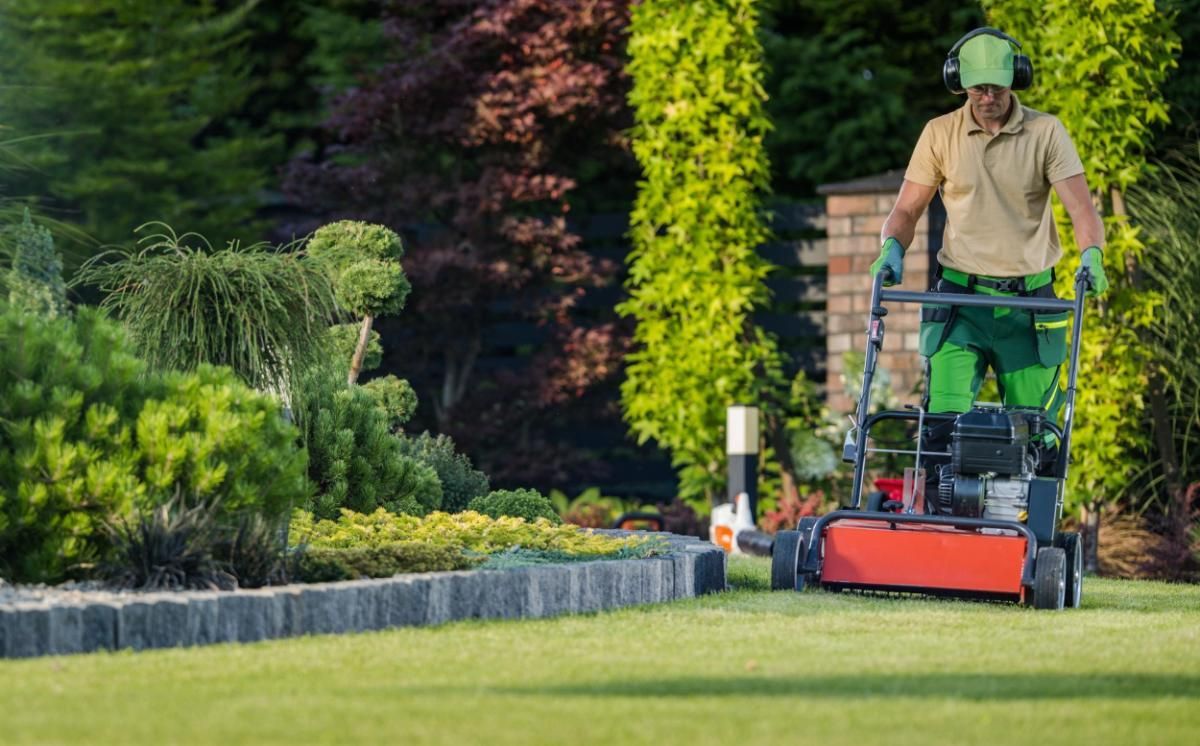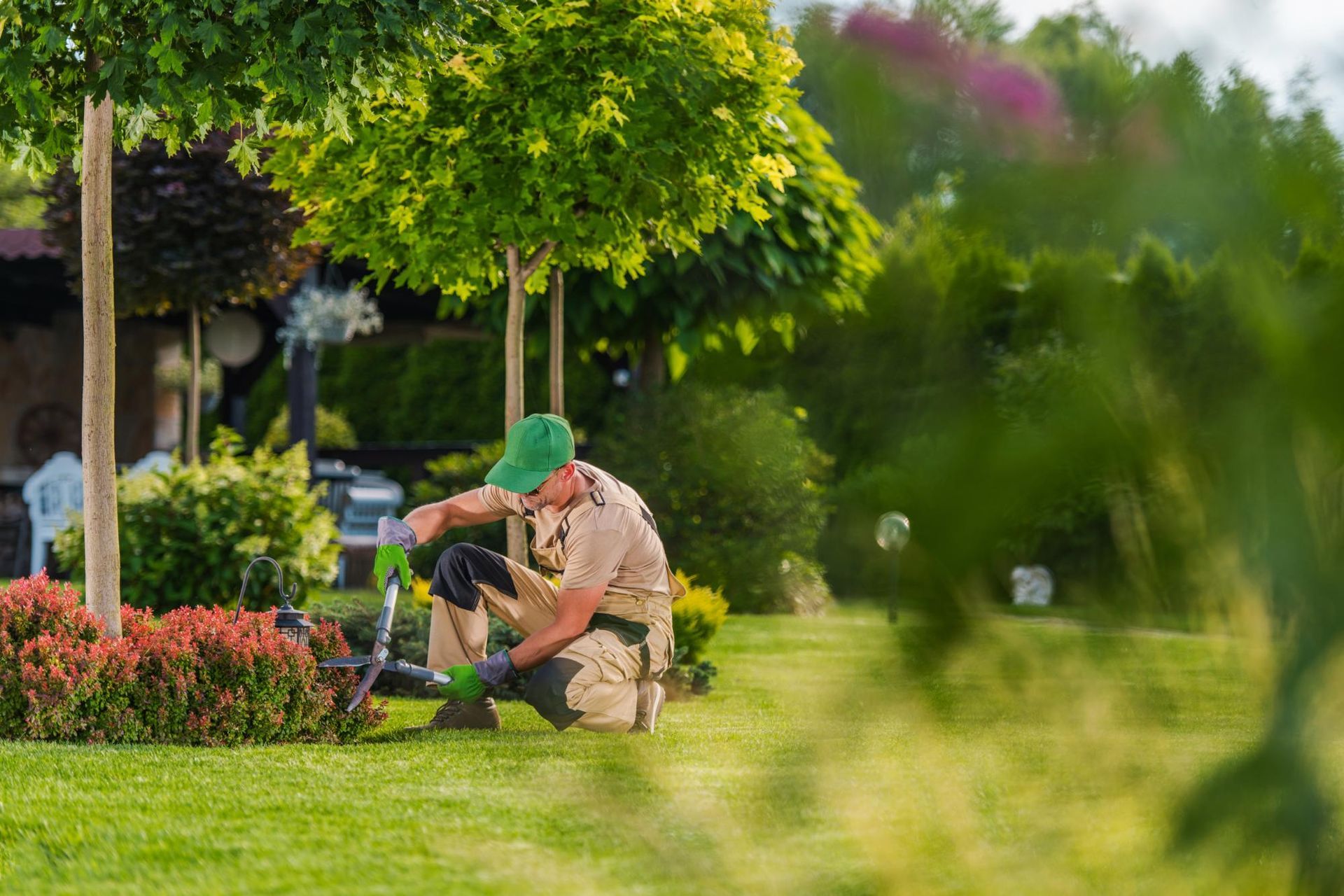Optimal Times: When to Fertilize Yard in Texas for a Lush Lawn
Wondering when to fertilize yard in Texas? This guide will tell you the best times and methods for a thriving lawn.
Key Takeaways
- Optimal fertilization times for Texas lawns are spring and fall, with a focus on using slow-release nitrogen fertilizers to support growth.
- Soil testing is essential for identifying nutrient deficiencies and tailoring fertilization strategies to maintain optimal lawn health.
- Managing additional lawn care practices like watering, mowing, and pest control complements fertilization efforts for a vibrant, resilient lawn.
Optimal Seasons for Fertilizing Texas Yards
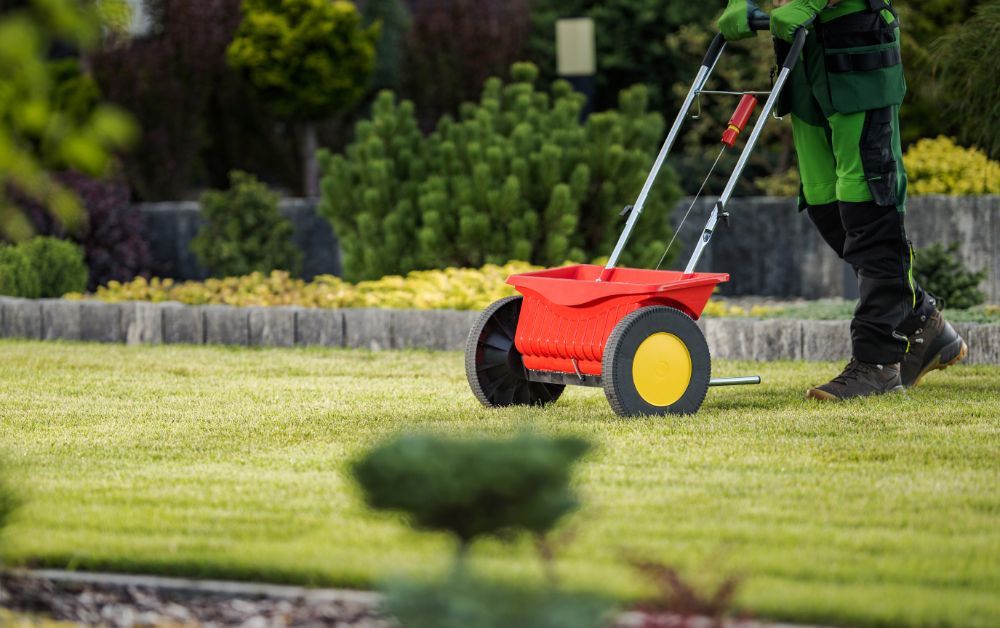
Timing is crucial for fertilizing your lawn in Texas. Recognizing the optimal moments for application is key. The key seasons to focus on are spring and fall when the grass is actively growing. Adjusting your fertilization schedule to align with Texas’s climate patterns ensures that your lawn receives the nutrients it needs at the right time. Fertilizing your lawn once or twice each season helps maintain a healthy, vibrant yard.
Monitoring seasonal conditions and considering factors like shade, soil condition, and grass type contribute to optimal results.
Spring: Kickstart Growth
Spring offers an ideal opportunity to give your lawn a fresh start. The best time to apply a spring fertilizer for warm-season grasses in Texas is from early March to mid-April. Applying a slow-release, high-nitrogen granular fertilizer during this period promotes lush growth and provides necessary nutrients as the grass begins to grow actively. In Central Texas, a second application in the fall can further enhance lawn health and establish a robust yard.
South Texas lawns benefit from early spring fertilization due to the favorable temperatures that allow for year-round growth. Applying fertilizer around six weeks after the last frost ensures that the grass is actively growing and ready to absorb the nutrients. This strategic timing ensures a healthy growing season, giving your lawn the necessary nutrients for vibrant and sustained growth.
Summer: Maintaining Health
With summer approaching, maintaining your lawn’s health becomes essential. Fertilizing in late spring or early summer, around May or June, is ideal for Texas lawns. During these months, using slow-release nitrogen fertilizers helps promote lawn health and prevents the risk of burn from liquid fertilizers. Spacing nitrogen applications 45 to 60 days apart ensures optimal lawn health throughout the summer.
In Central Texas, fertilizing before the peak summer heat enhances drought resistance and helps the grass cope with stress. Strategic fertilization ensures your lawn remains resilient and lush even during the hottest months.
Fall: Preparing for Dormancy
Fall is pivotal for preparing your lawn for dormancy. The best period for fall fertilization in Texas is from September to early November. A balanced N-P-K ratio fertilizer with lower nitrogen content stores nutrients for winter and promotes strong spring growth. Fall nitrogen applications increase lawn thickness and help withstand common winter weeds.
A recommended nitrogen application rate for fall fertilization is 1 pound or less per 1,000 square feet. This approach ensures your lawn is adequately nourished without overstimulating growth, maintaining health throughout the dormant winter months. If you’re wondering how much fertilizer to use, this guideline is a good starting point.
Winter: Optional Nutrient Boost
Winter fertilization can provide an optional nutrient boost for your lawn. This can be done in late December or January, using a slow-release formula to sustain nutrient levels during the colder months. While not necessary for all lawns, winter feeding can help maintain a healthy lawn by ensuring that nutrient requirements are met year-round.
If you choose to fertilize in winter, use a slow-release formula to avoid nutrient runoff and ensure a steady nutrient supply. This optional step can help fertilize your lawn in top shape, ready to thrive once the growing season resumes in spring.
Essential Components of Lawn Fertilizer
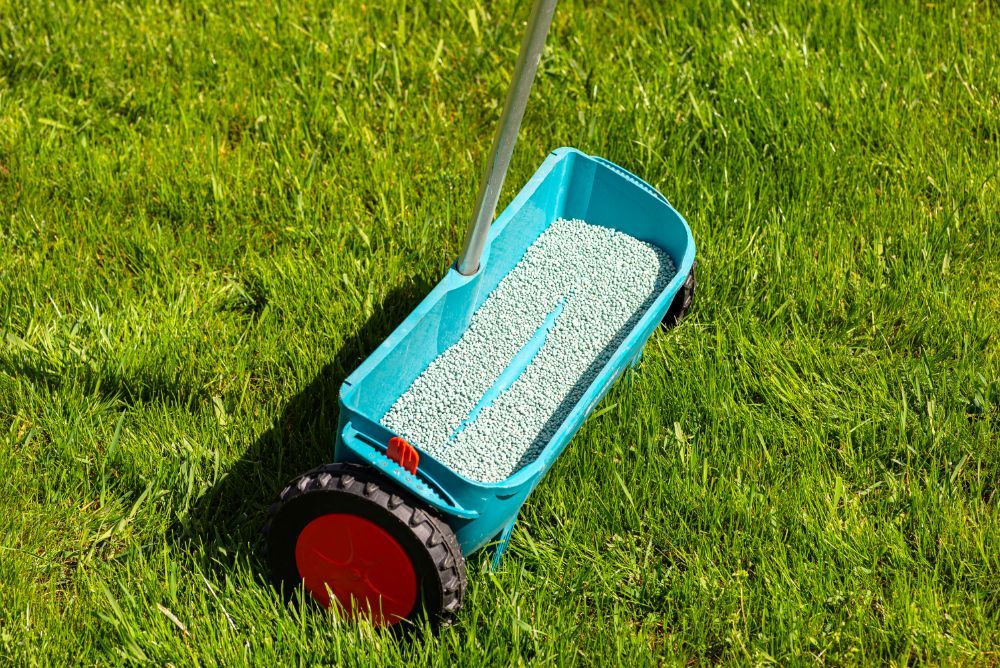
Understanding the components of lawn fertilizer is key to achieving a healthy lawn. The three main nutrients found in lawn fertilizers are nitrogen, phosphorus, and potassium. Each nutrient plays a vital role in grass health: nitrogen promotes green, dense grass; phosphorus strengthens root systems; and potassium helps grass withstand drought, disease, and temperature extremes.
Selecting the best fertilizer with the right nutrient balance maintains a vibrant and robust lawn.
Nitrogen for Growth
Nitrogen promotes chlorophyll production, crucial for energy and growth in grass. A lack of nitrogen can lead to pale or yellowish grass, indicating poor chlorophyll production and overall weak lawn health.
Applying the right amount of nitrogen during the growing season keeps your lawn lush and vibrant, providing necessary nutrients for optimal growth.
Phosphorus for Root Development
Phosphorus is crucial for energy transfer within plants and establishing robust root systems. It enhances the grass’s ability to take up water and nutrients, promoting overall health and resilience.
Adequate phosphorus supports strong root growth, essential for a thriving lawn.
Potassium for Stress Resistance
Potassium improves the grass’s resilience against extreme weather conditions and diseases, contributing to overall lawn health. Combining potassium with proper lawn care, such as adequate watering and mowing, leads to a resilient lawn capable of withstanding drought and disease.
This nutrient is key to maintaining a robust, healthy lawn year-round.
Regional Considerations for Texas Lawns
Fertilization strategies in Texas vary by regional climate and soil types, requiring tailored approaches. Different regions in Texas experience distinct growing seasons, which influences the timing of fertilizer applications.
We will explore the specific needs of North Texas, Central Texas, and South Texas, providing insights for a healthy lawn and Texas lawn in each region.
North Texas: Cool-Season Grass Needs
North Texas is home to cool-season grasses that thrive in cooler months and require tailored care and fertilization schedules. Using a balanced fertilizer with lower nitrogen content supports their growth without overstimulating. Consistent care, such as proper watering and mowing, is crucial for healthy cool-season lawns in North Texas.
For best results, follow a fertilization schedule that aligns with the growing season of cool-season grasses. This approach ensures that your lawn receives the necessary nutrients at the optimal times, promoting robust growth and resilience.
Central Texas: Adapting to Heat
Central Texas lawns face unique challenges, especially during the summer heat. Adjust fertilization based on environmental factors such as shade and soil condition. Tailored lawn care strategies help grass resist heat stress and thrive in Central Texas conditions.
In cities like San Antonio, adapt fertilization practices to the regional climate. Apply fertilizers at the right times and ensure the grass, including Augustine grass, is adequately nourished to withstand intense summer heat. By doing so, Texas homeowners can maintain a healthy lawn even in the hottest months.
South Texas: Year-Round Care
Lawns in South Texas thrive year-round, allowing for a consistent fertilization schedule compared to cooler regions. Warm-season grasses like Bermuda require regular fertilization to remain vibrant and healthy. Consistent year-round care is vital for these grasses to thrive in South Texas’s warm climate.
Corn gluten meal is an effective organic fertilizer for South Texas lawns. It serves as a pre-emergent herbicide and a nitrogen source, helping to control weeds and provide necessary nutrients for grass growth. This dual-purpose product is particularly beneficial for maintaining a lush, green lawn throughout the year.
Soil Testing: The Key to Effective Fertilization
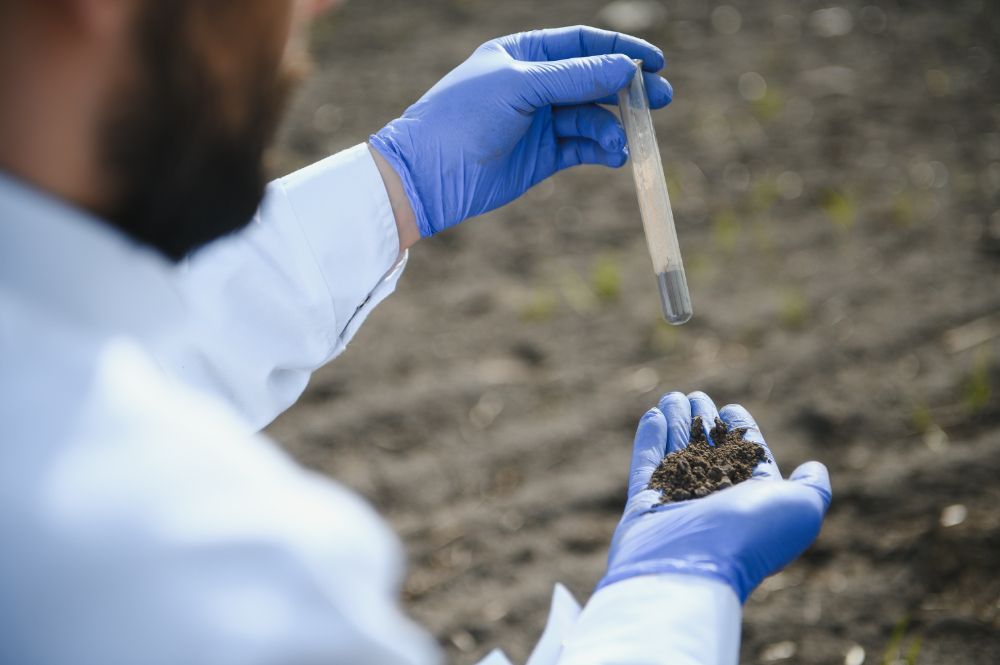
Soil testing identifies nutrient deficiencies and helps adjust fertilization accordingly. Regular soil tests help maintain optimal nutrient levels in the soil, ensuring that your lawn receives the right balance of nutrients for healthy growth.
Understanding soil pH from test results informs necessary adjustments for nutrient uptake by grass. We will guide you through conducting a soil test and using the results to adjust fertilization.
Conducting a Soil Test
Conducting a soil test involves collecting samples from multiple lawn areas for a comprehensive analysis. Collect samples using a soil probe or garden spade, ensuring they come from various spots for an accurate representation. Conduct soil tests at home using DIY kits or send samples to professional labs for more accurate results.
When sending samples for lab testing, ensure they are dry and free from organic materials to avoid inaccurate results. Soil tests can be conducted through your county Extension office. Alternatively, you can also use the Texas A&M Soil Testing Laboratory. These tests provide vital information for informed decisions about your lawn’s fertilization needs.
Adjusting Fertilization Based on Soil Results
Soil test results inform the selection of fertilizers to address specific nutrient needs for optimal lawn health. Choose products that align with the nutrient ratios indicated by soil test results when adjusting fertilizer applications. This ensures that your lawn receives the correct nutrients in the right amounts, promoting healthy and robust growth.
For instance, phosphorus deficiency can result in stunted growth and yellowing of new grass shoots, mimicking nitrogen deficiency. Address specific nutrient deficiencies based on soil test results to achieve a healthy lawn that withstands various environmental stresses.
Additional Lawn Care Tips
Maintaining a healthy lawn involves more than timely fertilization. Proper watering techniques, mowing practices, and pest and weed management are crucial to achieving a vibrant yard.
Deep and infrequent watering is more beneficial than frequent light watering. Fall fertilization strengthens grass and enhances its resilience against winter weeds. This section will provide valuable tips to complement your fertilization efforts and ensure a lush, green lawn.
Watering Techniques
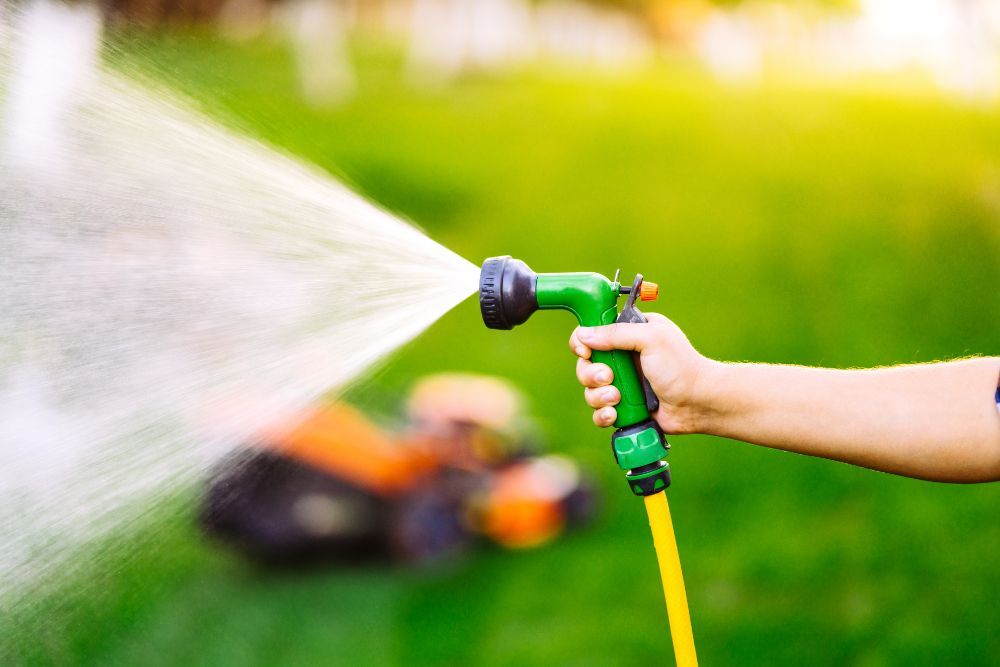
Efficient watering practices complement fertilization efforts and ensure a healthy lawn. Watering between midnight and 9 AM minimizes evaporation and reduces the risk of disease. Early morning watering ensures the grass receives sufficient moisture without losing water to evaporation.
Deep and infrequent watering is more beneficial than frequent light watering, as it encourages deep root growth and helps the lawn withstand drought conditions. Following these watering techniques ensures your lawn remains adequately hydrated and healthy throughout the growing season.
Mowing Practices
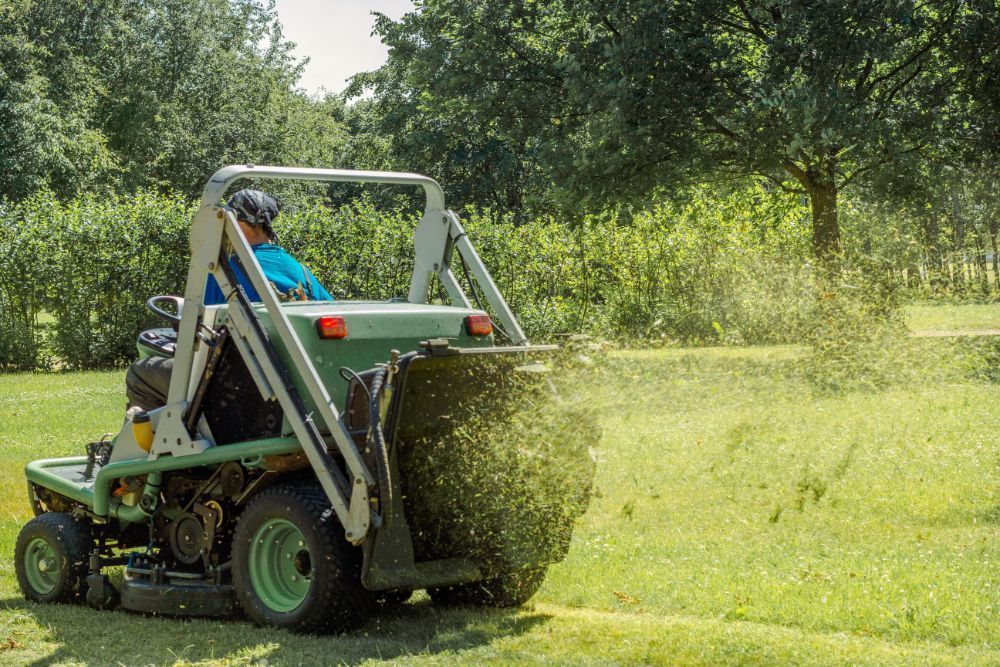
Proper mowing practices are vital for maintaining a healthy lawn. Mow frequently enough that no more than one-third of the grass height is removed at once. This practice prevents stress and disease, ensuring the grass remains strong and resilient.
Mowing height and frequency are crucial for lawn health. Improper mowing practices can stress the lawn and make it more susceptible to disease. Adhering to recommended mowing practices maintains a lush and healthy lawn throughout the year.
Dealing with Pests and Weeds
Managing pests and weeds is crucial for lawn care. Regular inspections for pests like chinch bugs and army-worms allow for early intervention and prevent further lawn damage. Proper watering and fertilization reduce vulnerability to pest infestations.
Pre-emergent herbicides like corn gluten meal control weed seeds while providing nitrogen for grass growth. Addressing pests and weeds proactively ensures your lawn remains healthy and free from unwanted invaders.
Using Organic Fertilizers
Organic fertilizers provide numerous benefits for maintaining a healthy lawn. They enhance soil health by promoting microbial activity and a balanced ecosystem. Organic fertilizers provide a slow nutrient release, minimizing the risk of over-fertilization and runoff.
We will explore the benefits of organic fertilizers and present popular options for your lawn care needs.
Benefits of Organic Fertilizers
Derived from natural sources, organic fertilizers are popular among environmentally conscious homeowners. Organic fertilizers enhance soil structure and promote beneficial microbial activity, essential for nutrient availability. Over time, organic fertilizers improve soil fertility and help maintain a vigorous, drought-resistant lawn, unlike chemical fertilizers.
Additionally, they reduce chemical runoff and pollution, contributing to healthier local waterways and ecosystems. Opting for organic fertilizers allows you to create a sustainable and environmentally friendly lawn care routine.
Popular Organic Fertilizer Options
Corn gluten meal is a natural pre-emergent herbicide and fertilizer, controlling weeds while providing nitrogen for grass growth. Bone meal is another excellent option, providing a rich source of phosphorus for root development and strong plant growth. These organic options ensure your lawn receives necessary nutrients in an eco-friendly manner.
Compost is a valuable addition to any organic fertilization plan. It enriches the soil with nutrients, improves soil structure, and promotes beneficial microbial activity. By incorporating these popular organic fertilizers into your lawn care routine, you can achieve a healthy and sustainable lawn.
Summary
In summary, achieving a lush lawn in Texas requires understanding the optimal times for fertilization and tailoring your approach based on seasonal and regional considerations. By focusing on key seasons like spring and fall, utilizing essential nutrients like nitrogen, phosphorus, and potassium, and implementing additional lawn care practices, you can maintain a vibrant and healthy yard year-round. Embrace the benefits of organic fertilizers to create a sustainable and eco-friendly lawn care routine. With these insights, you’re well-equipped to achieve the lawn of your dreams.
Frequently Asked Questions
